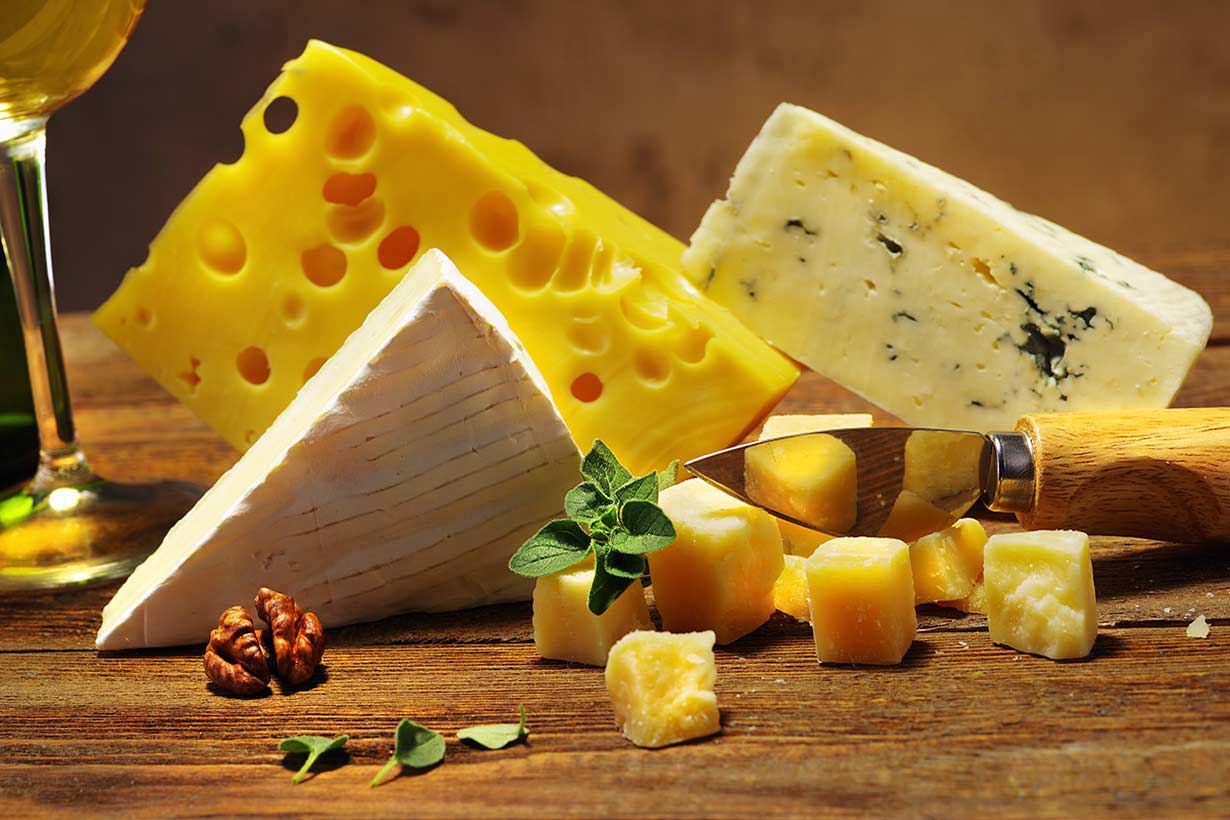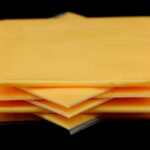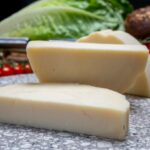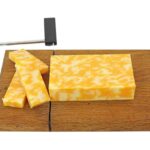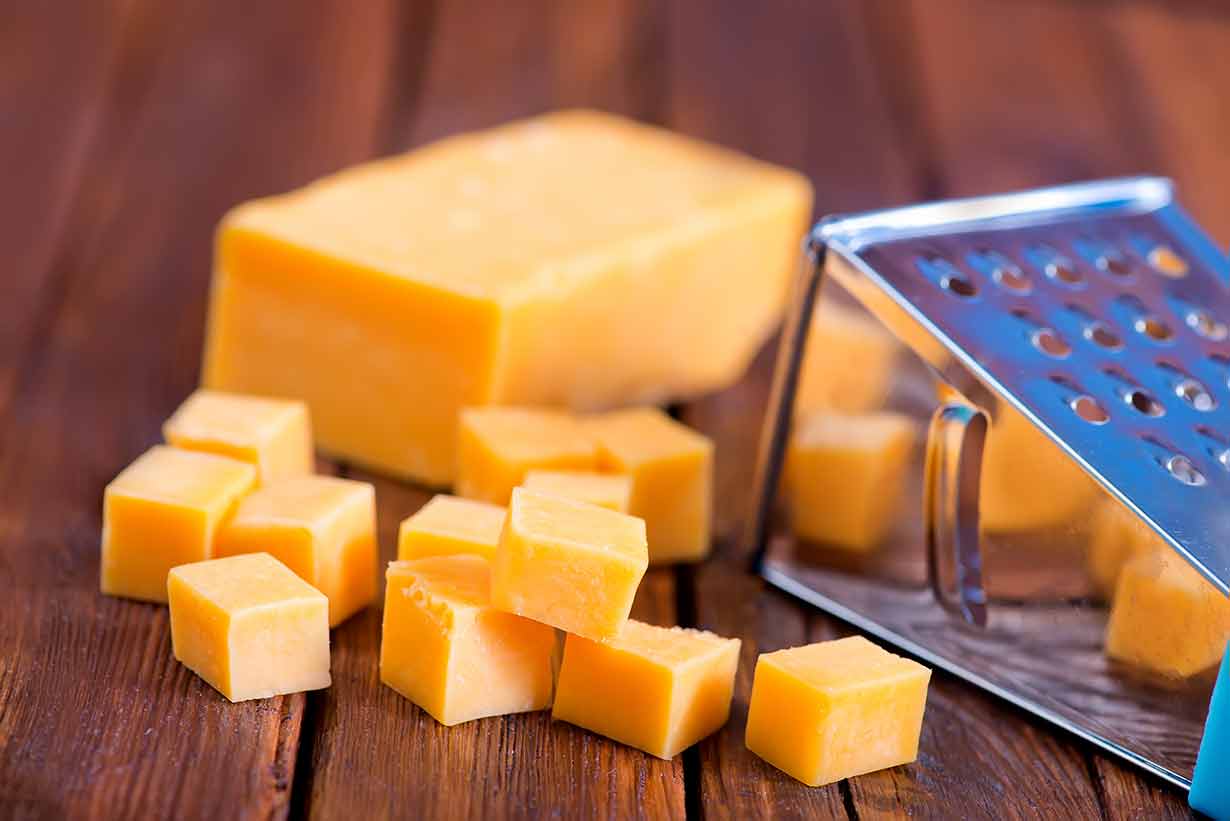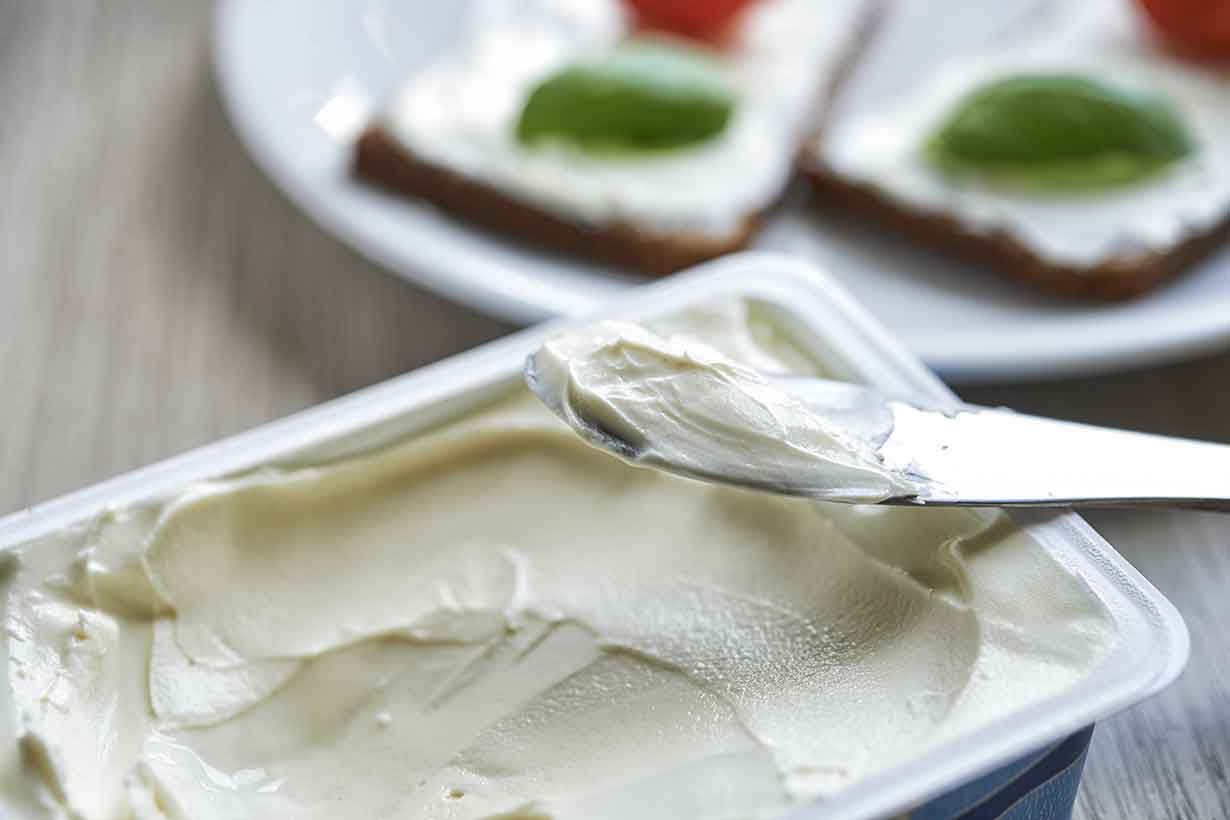The Laughing Cow, a widely popular processed cheese product, enjoys global recognition.
But what exactly is it, and does it provide nutritional qualities comparable to traditional cheese?
This article delves into the ingredients, nutritional attributes, and potential benefits and downsides of The Laughing Cow cheese.
Is it a healthy choice?
Table of contents
What Is The Laughing Cow Cheese?
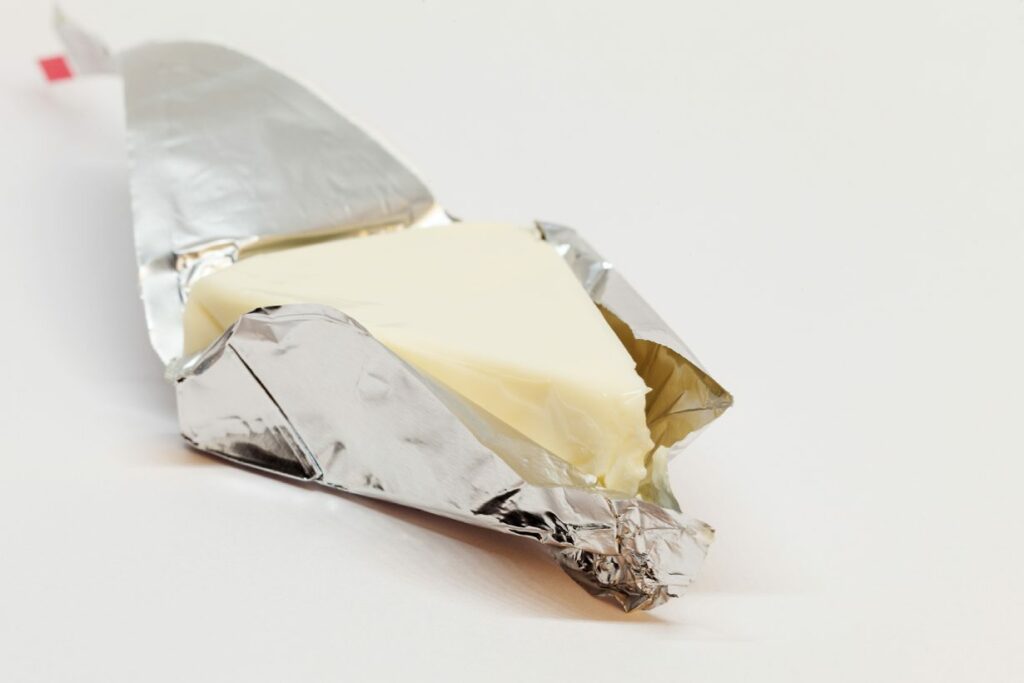
Originally introduced in 1921 within France’s Lons-le-Saunier region by Bel Brands, The Laughing Cow is a spreadable processed cheese product (1).
The original version of the product is packaged in a circular cardboard box, encompassing eight triangular portions of cheese, each individually wrapped in foil.
Regarding The Laughing Cow cheese itself, it consists of a blend of diverse ingredients rather than representing a specific cheese variety. The original variety features a mild and creamy taste that is both soft and slightly salty. It has an enjoyable flavor and spreads easily.
As time has passed, The Laughing Cow range has expanded to include different varieties, flavors, ‘light’ options, a plant-based option, and an assortment of package sizes. This assortment includes tubs, cubes, and cheese blocks.
The primary focus of this article centers on the ‘original’ version of the product.
The Laughing Cow is characterized by its iconic logo; a smiling red cow wearing earrings that mirror the design of the original packaging, resembling the product’s circular outer boxes.
Ingredients Profile
Taken from The Laughing Cow’s official website, here is the list of ingredients contained within The Laughing Cow ‘Creamy Original’ (2):
- Cheddar
- Semisoft cheese
- Swiss cheese
- Whey
- Milk protein concentrate
- Butter
- Water
- Skim milk
- Sodium polyphosphate (an emulsifier and thickener)
- Less than 2% each of: tricalcium phosphate, citric acid, milk fat, salt, cholecalciferol (vitamin D), and vitamin A acetate
Based on this ingredients list, it is evident that The Laughing Cow incorporates several added ingredients that aren’t typically found in individual cheese varieties. These additional ingredients include whey, milk protein concentrate, sodium polyphosphate, and citric acid.
Varieties of The Laughing Cow Cheese
This article will center on The Laughing Cow’s ‘Creamy Original’ variety
Nonetheless, here is a list of the distinct available varieties (3):
- Creamy Original
- Creamy Light
- Creamy Garlic & Herb
- Creamy Aged White Cheddar
- Creamy Spicy Pepper Jack
- Creamy Asiago
- Creamy Aged Cheddar Bacon
Furthermore, a plant-based version of The Laughing Cow has recently been introduced.
What Nutritional Values Does The Laughing Cow Have?
Below you’ll find the full nutritional profile for The Laughing Cow ‘Creamy Original’ per 19-gram wedge.
This nutritional data has been collated from the NCC Food and Nutrient Database, along with The Laughing Cow’s official website (2, 4).
Daily values were calculated using this data and the FDA’s published daily values.
| Name | Amount | % Daily Value |
|---|---|---|
| Calories | 45 kcal | |
| Carbohydrates | 1.0 g | 0.4% |
| Fiber | 0 g | 0% |
| Sugars | 1.0 g | |
| Fat | 3.5 g | 4.5% |
| Saturated | 2.5 g | 12.5% |
| Monounsaturated | 0.88 g | |
| Polyunsaturated | 0.15 g | |
| Omega-3 | 0.01 g | |
| Omega-6 | 0.08 g | |
| Protein | 2.0 g | 4.0% |
| Cholesterol | 10 mg | 3.3% |
As indicated in the table, a single serving of The Laughing Cow cheese—a 19-gram wedge—contains 45 calories, 2 grams of protein, and 3.5 grams of fat, which includes around 2 grams of saturated fat.
Vitamins
| Name | Amount | % Daily Value |
|---|---|---|
| Choline | 3.48 mg | 0.6% |
| Folate | 2.68 mcg | 0.7% |
| Vitamin A, RAE | 23.48 mcg | 2.6% |
| Vitamin B1 (thiamin) | 0.01 mg | 0.8% |
| Vitamin B2 (riboflavin) | 0.06 mg | 4.6% |
| Vitamin B3 (niacin) | 0.02 mg | 0.1% |
| Vitamin B5 (pantothenic acid) | 0.09 mg | 1.8% |
| Vitamin B6 (pyridoxine) | 0.01 mg | 0.6% |
| Vitamin B12 (cobalamin) | 0.17 mcg | 7.1% |
| Vitamin C | 0.01 mg | <0.1% |
| Vitamin D | 0.064 mcg | 0.4% |
| Vitamin E | 0.08 mg | 0.5% |
| Vitamin K | 0.25 mcg | 0.2% |
The cheese is a good source of B vitamins, particularly vitamin B12.
Minerals
| Name | Amount | % Daily Value |
|---|---|---|
| Calcium | 72.37 mg | 5.6% |
| Copper | 0.01 mg | 3.3% |
| Iron | 0.03 mg | 0.2% |
| Magnesium | 4.45 mg | 1.1% |
| Manganese | 0.01 mg | 0.4% |
| Phosphorus | 58.88 mg | 4.7% |
| Potassium | 25.90 mg | 0.6% |
| Selenium | 3.13 mcg | 5.7% |
| Sodium | 190.12 mg | 8.3% |
| Zinc | 0.43 mg | 3.9% |
Among the minerals it contains, it has a moderately high content of calcium, phosphorus, selenium, and sodium.
Nutritional Differences Between The Laughing Cow ‘Original’ and ‘Light’
The subsequent table offers a concise side-by-side comparison of the basic nutritional values of The Laughing Cow ‘Original’ and ‘Light’ variants (2, 4, 5):
| Name | The Laughing Cow ‘Creamy Original’ | The Laughing Cow ‘Light’ |
|---|---|---|
| Calories | 45 kcal | 25 kcal |
| Carbohydrates | 1.0 g | 1.0 g |
| Fiber | 0 g | 0 g |
| Sugars | 1.0 g | 1.0 g |
| Fat | 3.5 g | 1.5 g |
| Saturated | 2.02 g | 1.0 g |
| Protein | 2.0 g | 2.0 g |
| Cholesterol | 10 mg | 5 mg |
As shown by the table, the ‘light’ variety of The Laughing Cow has an overall calorie content that is nearly half that of the original version.
Moreover, it contains less than half the quantity of fat, saturated fat, and cholesterol.
Benefits of The Laughing Cow Cheese
The Laughing Cow cheese presents a range of benefits, spanning nutritional considerations and other characteristics.
Here is a concise overview of these beneficial attributes:
- A moderately good source of protein: Over two grams of protein per 19-gram serving. However, it is worth noting that with approximately 10 grams of protein per 100 grams, it wouldn’t qualify as one of the highest protein cheese options.
- Rich in B vitamins: The Laughing Cow provides a good range of B vitamins. These V vitamins are important for breaking down the food we eat, energy production, and carrying nutrients around the body (6, 7).
- High in calcium and phosphorus: Each cheese wedge provides around 5% of the daily value for calcium and phosphorus. These essential minerals are vital for bone health (8, 9).
- Convenient and fun: Each ‘wedge’ (or portion) of The Laughing Cow comes encased in shiny foil wrap, making it a simple addition to a lunchbox. On this note, peeling off the shiny wrapper makes it a fun and enjoyable snack for children.
- Portion control: The potential to over-consume foods like cheese diminishes with the Laughing Cow’s individually wrapped single-serve portions. These ready-made portion sizes take any guesswork when cutting cheese away. A single portion of the cheese provides only 45 calories and a modest amount of dietary fat. Additionally, the ‘Light’ variation of the product provides a viable option for individuals seeking to keep calorie or saturated fat levels low.
- Available in various flavors: As earlier indicated, The Laughing Cow is available in several varieties. This means the product can cater to diverse palates, allowing people to try different flavors.
- Versatility: as spreadable cheese in a triangular shape, a portion of The Laughing Cow can be used in various ways. It can be enjoyed as is, spread onto foods like bread and crackers, or consumed with carrot and celery sticks.
Downsides
Like any food, The Laughing Cow also comes with potential downsides. Here is an overview:
- The expense: The Laughing Cow is far from being among the most expensive food items. That said, its price per gram is relatively high when compared to regular cheese. For example, a large block of common cheese like Cheddar or Colby Jack offers a more economical option per gram.
- Additional ingredients: As previously mentioned, The Laughing Cow has added ingredients such as emulsifiers, butter, and whey. In other words, it does not have the same composition as traditional cheese, meaning some individuals may wish to avoid these added ingredients.
- Lactose intolerance: as a source of milk, cheese, whey, and butter, The Laughing Cow contains lactose. However, the lactose content appears in relatively small quantities, with approximately 1 gram of sugar (lactose) in a 19-gram wedge. For individuals with milder lactose intolerance, this small amount will typically be manageable (10, 11). Nevertheless, some may still choose to avoid any dietary lactose source.
- Cow’s milk protein allergy: The Laughing Cow Is unsuitable for individuals with a milk protein allergy. Milk protein allergy is characterized by an immune response (allergic reaction) to foods that contain milk proteins (12, 13).
- High sodium content: The Laughing Cow is relatively high in sodium, with a single serving of the cheese contributing nearly 10% of the recommended daily value for sodium.
How Does The Laughing Cow Compare To Other Varieties of Cheese?
Once again, the basic nutritional composition of a 19-gram serving of The Laughing Cow cheese is as follows: 45 calories, 1g carbohydrates, 3.5g fat, 2.5g saturated fat, and 2g protein.
With this data in mind, let’s explore how these nutritional properties compare with 19 grams of several other cheese options.
- Parmesan: Parmesan cheese, recognized as a hard-aged cheese, has 74 calories, 0.6g carbohydrates, 4.91g fat, 3.12g saturated fat, and 6.79g protein per 19 grams (14).
- Brie: Brie is a soft-ripened cheese that contributes 63 calories, 0.1g carbohydrates, 5.26g fat, 3.31g saturated fat, and 3.94g protein per 19 grams (15).
- Cream cheese: Cream cheese represents the soft and fresh cheese category, typically offering 56 calories, 0.67g carbohydrates, 5.43g fat, 3.42g saturated fat, and 1.35g protein per 19 grams (16).
- Babybel: Babybel cheese is a popular cheese product also available in individual portions. A 21-gram serving contains 70 calories, 0g carbohydrates, 6.01g fat, 3.99g saturated fat, and 5.0g protein (17).
As these comparisons show, The Laughing Cow cheese boasts fewer calories and reduced fat levels when compared to aged cheese, soft cheese, cream cheese, and a similar individually-packaged cheese product.
However, it also has significantly lower protein levels compared to these other options, with the exception of cream cheese.
When examining the basic nutritional values of these cheese varieties, it is evident that The Laughing Cow is probably most closely related to cream cheese nutritionally.
How To Eat The Laughing Cow Cheese
There are many ways in which one can eat this versatile cheese product:
- Eat it by itself
- Spread it on bagels, bread/toast, and crackers
- Use it as a sandwich filling
- Drop a portion in a soup or stew for some additional flavor and a creamier texture
- Dip vegetable sticks (carrots, celery, etc) into the cheese
- Melt a portion into a curry or pasta dish
- Chop a portion into several pieces and add them to a salad
- Use it as a creamy omelet filling
Commonly Asked Questions
In wrapping up this guide and addressing any potentially remaining questions, here are answers to commonly asked questions about The Laughing Cow.
All the existing varieties of The Laughing Cow do not contain gluten. However, it is worth being cautious about any new or limited edition versions that might emerge. To confirm gluten-free status, it is always important to check the ingredients label.
Every variety of The Laughing Cow is suitable for vegetarians. However, due to the presence of dairy, they are not appropriate for vegans. That said, there is a recently introduced plant-based version of the product. This plant-based option is suitable for individuals following a vegan diet.
Unless there are any allergy or lactose intolerance concerns, then it is suitable for children. The act of peeling the shiny packaging back to reveal the cheese can be a fun experience for children too.
Yes, it is perfectly fine to use product in cooked dishes. While it will melt, it will impart its creamy and subtle cheese flavor to the dish.
As a dairy product, proper refrigeration is essential for The Laughing Cow cheese. It will typically display a ‘best before’ date that extends several weeks beyond the date of purchase. During this period, it maintains its ‘best’ quality when stored in the refrigerator. However, once opened, it should be consumed within approximately a week. For accurate storage instructions for a particular product, check the corresponding product labeling.
Is The Laughing Cow Cheese Healthy?
The Laughing Cow is a cheese product that contains relatively few calories while providing a moderate dose of protein, vitamins, and minerals.
As a compact snack, a 19-gram portion offers reasonable nutritional value, delivering only 45 calories. Furthermore, ‘light’ variations provide similar nutritional value for only 25 calories per serving.
However, it’s important to note that, unlike regular cheese, this product contains added ingredients, like emulsifiers and butter.
Hence, a piece of traditional cheese or a snack product composed solely of cheese, such as Babybel, is probably a healthier choice.
With that being said, for those who enjoy the distinctive taste and spreadable characteristics of The Laughing Cow cheese, it can fit into a balanced and healthy dietary pattern.

